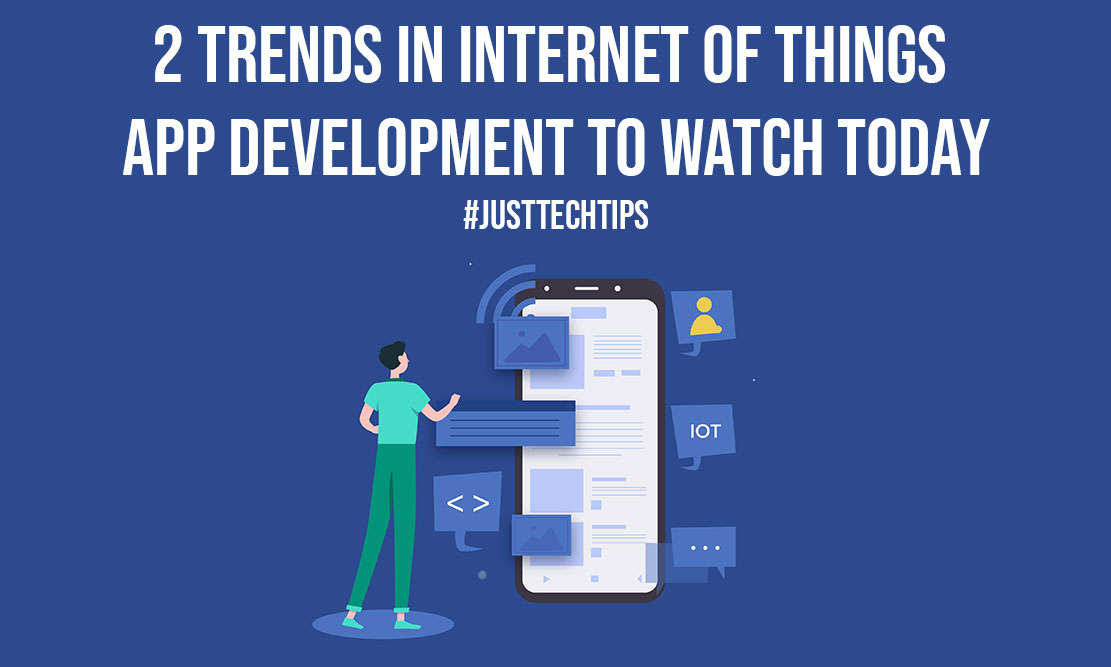Should technology supporting the Internet of Things app development continue at the pace that it is currently, we should all be ready to get used to billions of Internet of Things devices crawling around our offices and bedrooms.
If you were living inside a remote cave until now, you might not have heard of IoT (Internet of Things) applications; it refers to anything outfitted with sensors and technology that allows them to communicate and exchange data with other devices that are also connected to the internet.
You can create IoT applications for various office solutions and even domestic purposes. Developing an app for IoT in fields like engineering, especially in robotics, will make our lives a cup of morning coffee.

The article from TopFlightApps about building IoT applications focuses on emerging trends in Internet of Things app development.
Trends in Internet of Things App Development
We can expect even more of the current surge in the number of companies and individuals interested and learning how to make IoT applications. The overarching theme of IoT trends is the increasing chances that consumers and an average person will own devices that they can interact with within their daily lives.
Therefore, we should expect to see the IoT market that points toward developing an app for IoT and consequently help the devices that house them become more affordable. These should be perfect use cases for household goods and common interactions in society.
Sensors play a significant role in IoT and building an IoT application. The functionality of IoT-enabled devices and how the app will work depends on them. IoT sensors will obtain data from the real world and document it.
They will work around the clock to observe changes in their environment that humans would not notice or have time to pay attention to. Here are the two most noticeable trends as far as IoT is concerned.
Also Read: Create Your Own Social Media App: Crucial Steps
Covid-19 and the Place of IoT
COVID-19 has brought an interesting twist to making IoT applications. The raging pandemic has forced regulations down our throats that reduce human contact with each other and with as many as possible public objects.
As we all try to find our way around this major problem, there is no doubt that technologies that reduce the need to touch the things we interact with daily are a huge breakthrough.
There will be more options for payment at checkout points and check-in services that do not require human input will become widespread at train stations, airports, and event venues.
Also, since we cannot be locked away from the streets for too long, we will continue to use public restrooms. To carefully manage a “virus friendly” place like this requires sensors placed outside to monitor the frequency of visitors.
They will help the sanitation workers keep a tab of usage and clean accordingly. There is an increasing need to build an IoT application inside devices that will monitor the air quality of our spaces and further take action in improving it as may be required.
Since we all are beginning to embrace a new culture of working from home, the intensity of security of devices connected to the office should increase and go several steps further in device surveillance to protect companies and businesses from attacks.
Developing an IoT app dedicated to the security of access to company data via phones and computers is crucial in fighting off hackers trying to introduce ransomware and viruses to the company servers.
Also Read: Mobile App Development: Technologies, Trends, And Tips To Find Reliable Team In 2021
5G Connectivity
In terms of the size of data exchanged by IoT-enabled devices and speed, it was indeed time to say goodbye to 4G cellular technology. Although relatively new, 5G connectivity has surpassed the departing 4G in every regard; 5 G comes with the substantially robust bandwidth and improved download speeds to all devices.
It is forgivable to say that 5G is another name for IoT if it solves your cave buddy’s argument problem. Internet of Things app development will rely on 5G great speed to allow for data transfer that does not go to sleep or interrupted any second of a given 365 days.
The more comprehensive the coverage of 5G connectivity, the more inevitable it becomes for the entire civilization to adopt IoT as a way of life.
Expect to see increased implementation on our favorite gadget-on-wheels; it will be interesting to witness the much-expected impact of 5G combined with IoT in full self-driving capabilities of cars in the nearest future.